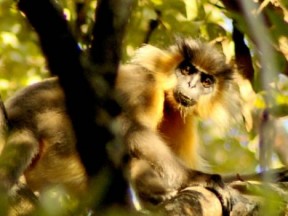When Manas National Park was removed from the UNESCO World Heritage Danger List in June this year, there was a lot to cheer about. The hard work put in by conservation groups has been recognised, but a bigger danger lies in the future — one that can virtually wash away the national park. Well, almost.
If a recent study conducted by Partha J Das (Head, Water, Climate & Hazard Programme) and Bibhab K Talukdar (Secretary General) of Aaranyak is to be taken even with a pinch of salt, there’s much to be apprehensive about. Manas was put in the World Heritage Site Danger List in 1992 because of hightened poaching instances and militant activities. Those threats may be gone, but the ones that loom large above the park known for its rare and endangered endemic wildlife come from dams being built in the Himalayas.
The existing Kurichu HEP (60 MW) and the proposed Mangdechu HEP (720 MW) power projects in Bhutan are likely to affect the forests and water bodies of Manas National Park (MNP) in a way which would make the ecosystems less supportive of wildlife. Manas is a WHS having unique species diversity such as pygmy hog, tiger, elephant, greater one horned rhino, hispid hare, golden langur, Bengal florican, etc. Both the Kurichu and the Mangdechu rivers contribute to the flow of the Manas-Beki river system while the MNP is considerably sustained by the waters of the Manas River and many of its small tributary streams.
The Kurichu dam has already affected the forests and wildlife of MNP. A landslide dam that formed in the Tsatichu river (in Bhutan) in 2004 breached on July 10, 2004, resulting in a large flood wave flowing through the Kurichu river inside Bhutan. The Kurichu Hydropower Project (60 MW) in Bhutan released the excess water that flooded several rivers in Assam including the Hakua, the Beki and the Manas. Moreover, it was a period of heavy monsoon.
As a result, it created an unprecedented flood hazard in Western Assam. Flash floods carrying trees and huge amounts of silt washed away parts of MNP killing a large number of wild animals. A large number of fibre glass and inflatable boats of the Forest Department in the park were also washed away leaving the staff stranded. The road from Barpeta to Kokrajhar was breached completely cutting off access to the park. Release of water from the Kurichu dam has been reported on several occasions in the last six years creating flood in areas belonging to the Manas Biosphere Reserve (MBR) while the excessive siltation caused by such flooding has made large areas of agricultural land unproductive thus creating a crisis in livelihood of the farmers.
Unfortunately, although such negative effects of the dams on both Manas and Kaziranga National Park are being observed, no significant study was done for assessing the probable impacts of these dams on these forests before these projects were given environmental clearance.
Aaranyak feels that UNESCO, the apex authority that selects and monitors the status of the natural World Heritage Sites, should take cognisance of the serious threats posed by the large dams being constructed in Arunachal Pradesh (India) and Bhutan to Kaziranga and Manas, and ensure proper assessment of impacts and mitigation thereof so that the rich natural heritage of these two sites can be protected and conserved at any cost. Unless sincere efforts are made to check the large number of ecologically harmful and unsustainable dams being constructed and planned in the Eastern Himalayas, it will only be a matter of time before Kaziranga and Manas, become severely degraded, impaired and lose the prestigious WHS status.
This article was originally written for the Deadline Delhi column in Asian Correspondent. It has been reproduced here with the author’s permission. Subir Ghosh blogs at www.write2kill.in.






